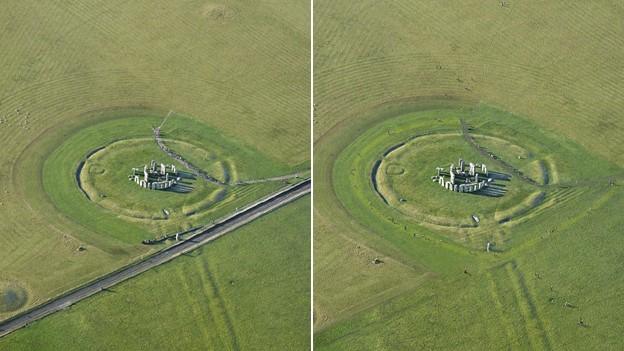Ancient pathway uncovered during works at Stonehenge
- Published

The A344 - which ran by the stones - is being restored to grass
An ancient ceremonial pathway linking Stonehenge and the nearby River Avon has been unearthed during work to close the road alongside the monument.
Two ditches buried beneath the A344 represent either side of the Avenue, a processional approach aligned with the sunrise of the summer solstice.
Its connection with Stonehenge had been severed when the A344 was built hundreds of years ago.
The find was made near the Heel Stone, about 24 metres from the monument.
English Heritage's Heather Sebire called it "the missing piece of the jigsaw", as the Avenue had been difficult to identify on the ground, but is clearly visible in aerial photographs.
She said: "The part of the Avenue that was cut through by the road has obviously been destroyed forever, but we were hopeful that archaeology below the road would survive.
'Restore dignity'
"It is very exciting to find a piece of physical evidence that officially makes the connection which we were hoping for."
National Trust archaeologist Dr Nick Snashall said it confirms "with total certainty" that Stonehenge and its Avenue were linked.
Work is currently being carried out to restore the A344 alongside the monument to grass and build a new visitor centre.
English Heritage said the work would "restore the dignity" of the stones' setting and "minimise the intrusion of the modern world".
Once the A344 has been restored to grass in summer 2014, markers will be put in place to demonstrate the solstice alignment.
English Heritage said it will enable visitors to "appreciate the position of the Avenue and its intimate connection with and significance to Stonehenge".
- Published11 July 2012
- Published26 June 2012
- Published30 December 2011
- Published24 June 2012